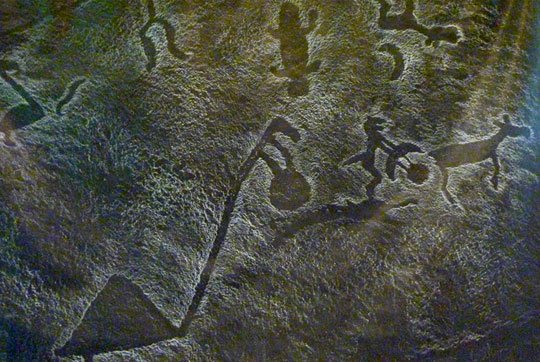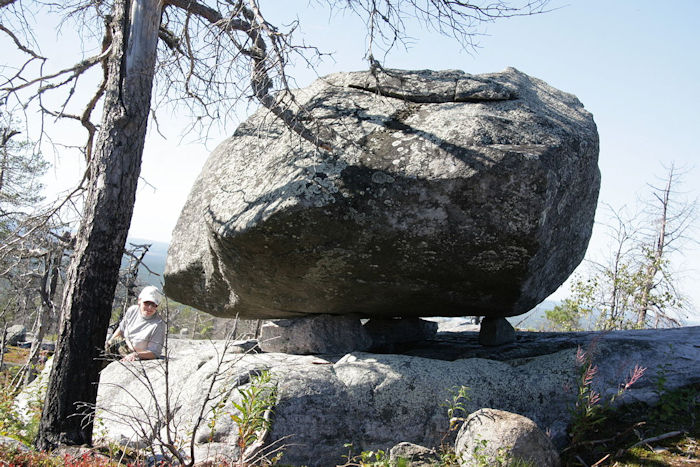Ancient Secrets Of Karelia: Mysterious Vottovaara Mountain Was Sacred To The Sami People
Ellen Lloyd - AncientPages.com - Many ancient civilizations believed spirits lived in sacred places such as trees, mountains, and stones.
One such place is the mysterious Vottovarra Mountain in Karelia, sacred to the Sami people. This enigmatic place was also an ancient pagan site and is still visited by neo-pagans who consider it particularly important.
Karelia has always been an area in Northern Europe of historical significance for Finland, Russia, and Sweden.
Swamp or lake and megalithic seid boulder stones, dead trees on mountain Vottovaara. Credit: Adobe Stock - geniousha
Archaeologists have uncovered many fascinating rock carvings in the region. On the eastern bank of Lake Onega, the second largest lake in Europe, archaeologists discovered about 1,200 rock drawings estimated to be from 5 to 6 thousand years old.
Known as the Onega petroglyphs, these astonishing rock carvings were deliberately made to display stunning special light effects, just like a prehistoric cinema.
Finn-Ugrick rock art from the Karelian Lake Onega region of Russia. Image credit: David Rothenberg.
Another intriguing site in Karelia is located about 20 kilometers from Sukkozero Lake. Here we find the beautiful Vottovaara Mountain, which became famous for its odd boulders scattered across the site.
The boulders known as Seida, Seyda, or Seid (Finnish language Seita) were sacred to the Sami culture, the oldest culture in large areas of northern Europe. Before the Swedish, Finnish, or Viking culture had developed, Scandinavia was populated by the Sami people (earlier referred to as the Saemieh).
The Sami people speak a language that is a member of the Uralic language family, along with Finnish, Hungarian, and Estonian languages. Interestingly, Norwegian and other Indo-European languages are unrelated to the Sami language.
The unusual thing about Vottovaara seidas is that many of them look like they were intricately cut, but they are natural formations when the glacial ice retreated about 10,000 years ago. Seidas are holy places related to Sámi culture. Seidas are usually situated on gentle rocky slopes and can be very large.
Vottovaara Mountain - Maximaximax - CC BY-SA 3.0
The ancient Sami people considered the boulders sacred and believed spirits lived in these magical, large stones. Before Christianity, traditional Sami peoples' beliefs were based on the practice of shamanism and animism.
Animism was manifested in that all significant natural objects, such as animals, plants, rocks, and many others, possessed a soul. So, it's only natural that the Sami people also believed in the existence of many spirits.
Updated on August 26, 2024
Written by Ellen Lloyd – AncientPages.com
Copyright © AncientPages.com All rights reserved. This material may not be published, broadcast, rewritten or redistributed in whole or part without the express written permission of AncientPages.com
Expand for referencesMore From Ancient Pages
-
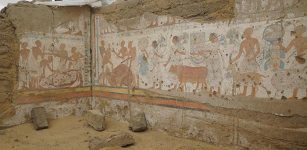 Tomb Of Pharaoh Ramesses II Treasurer Ptah-M-Wia Discovered In Saqqara
Archaeology | Nov 4, 2021
Tomb Of Pharaoh Ramesses II Treasurer Ptah-M-Wia Discovered In Saqqara
Archaeology | Nov 4, 2021 -
 Only Known Roman ‘Lorica Squamata’ Legion Armor Restored
Archaeology | Jun 27, 2024
Only Known Roman ‘Lorica Squamata’ Legion Armor Restored
Archaeology | Jun 27, 2024 -
 Can Discovered Algonquian Artifacts Solve Mystery Of The Lost Colony On Roanoke Island?
Archaeology | May 13, 2024
Can Discovered Algonquian Artifacts Solve Mystery Of The Lost Colony On Roanoke Island?
Archaeology | May 13, 2024 -
 Unique Life-Sized Camel Carvings In Northern Arabia Are Much Older Than Previously Thought
Archaeology | Sep 15, 2021
Unique Life-Sized Camel Carvings In Northern Arabia Are Much Older Than Previously Thought
Archaeology | Sep 15, 2021 -
 10 Mysterious Ancient Manuscripts With Hidden Secrets
Featured Stories | May 27, 2016
10 Mysterious Ancient Manuscripts With Hidden Secrets
Featured Stories | May 27, 2016 -
 Mayan Underwater Tunnels With Bones Of Humans, Elephant-Like Creatures, Tigers, Bears, Tigers And Extinct Horses, Rediscovered In Yucatan
Archaeology | Jan 19, 2018
Mayan Underwater Tunnels With Bones Of Humans, Elephant-Like Creatures, Tigers, Bears, Tigers And Extinct Horses, Rediscovered In Yucatan
Archaeology | Jan 19, 2018 -
 Castor And Pollux: Dioscuri Brothers Immortalized In The Night Sky In Greek Beliefs
Featured Stories | Jan 24, 2024
Castor And Pollux: Dioscuri Brothers Immortalized In The Night Sky In Greek Beliefs
Featured Stories | Jan 24, 2024 -
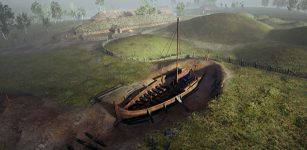 Archaeologists Reveal 12 Exciting Finds From The Gjellestad Viking Ship Dig
Archaeology | May 28, 2022
Archaeologists Reveal 12 Exciting Finds From The Gjellestad Viking Ship Dig
Archaeology | May 28, 2022 -
 Indigenous Communities Used The Caribbean Sea As An Aquatic Highway
Archaeology | Jun 23, 2022
Indigenous Communities Used The Caribbean Sea As An Aquatic Highway
Archaeology | Jun 23, 2022 -
 Mystery Of The Seven Sages In Ancient Myths And Legends
Featured Stories | Feb 20, 2016
Mystery Of The Seven Sages In Ancient Myths And Legends
Featured Stories | Feb 20, 2016 -
 Re-Evaluation Of Liujiang Skeleton’s Dating Sheds New Light On Human Occupation In China
Fossils | May 27, 2024
Re-Evaluation Of Liujiang Skeleton’s Dating Sheds New Light On Human Occupation In China
Fossils | May 27, 2024 -
 Remains Of A 2,300-Year-Old Sunken Ship Discovered At Alamein Shore
Archaeology | Aug 12, 2023
Remains Of A 2,300-Year-Old Sunken Ship Discovered At Alamein Shore
Archaeology | Aug 12, 2023 -
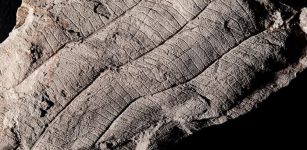 First Leaf Fossils Study Reveals An Ancient 4 Million-Year-Old Forest In Borneo
Fossils | May 3, 2022
First Leaf Fossils Study Reveals An Ancient 4 Million-Year-Old Forest In Borneo
Fossils | May 3, 2022 -
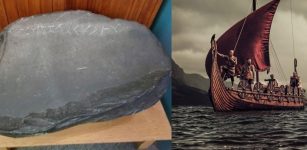 Does Yarmouth Runic Stone Describe A Trans-Atlantic Viking Voyage?
Artifacts | Oct 22, 2018
Does Yarmouth Runic Stone Describe A Trans-Atlantic Viking Voyage?
Artifacts | Oct 22, 2018 -
 First Human Culture Lasted 20,000 Years Longer Than Thought – New Study
Archaeology | Jan 11, 2021
First Human Culture Lasted 20,000 Years Longer Than Thought – New Study
Archaeology | Jan 11, 2021 -
 On This Day In History: Henry VIII Ascended The Throne Of England – On Apr 22, 1509
News | Apr 22, 2016
On This Day In History: Henry VIII Ascended The Throne Of England – On Apr 22, 1509
News | Apr 22, 2016 -
 Why Is The Oseberg Ship Burial A Great Viking Mystery?
Vikings | Jan 22, 2024
Why Is The Oseberg Ship Burial A Great Viking Mystery?
Vikings | Jan 22, 2024 -
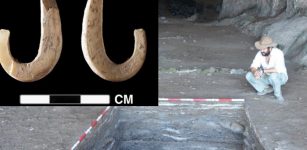 Late Pleistocene Human Colonization – What Makes Our Species Unique Compared To Other Hominins?
Archaeology | Apr 29, 2020
Late Pleistocene Human Colonization – What Makes Our Species Unique Compared To Other Hominins?
Archaeology | Apr 29, 2020 -
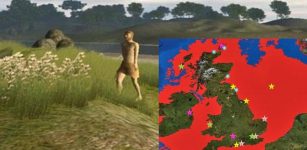 DNA From Doggerland That Separates The UK From Europe – New Study
Archaeology | Jul 20, 2020
DNA From Doggerland That Separates The UK From Europe – New Study
Archaeology | Jul 20, 2020 -
 Mythical Kingdom Of Prester John – Did It Exist?
Featured Stories | Mar 21, 2016
Mythical Kingdom Of Prester John – Did It Exist?
Featured Stories | Mar 21, 2016


